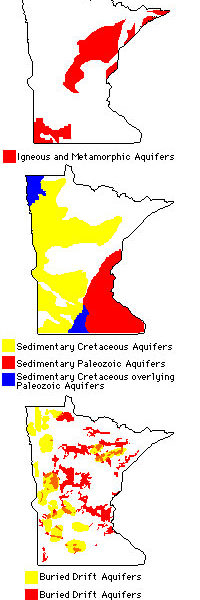Aquifers and Drinking Water for Minnesotans

From the U of M Extension website
Although man-made chemicals such as pesticides may get more attention, the most common drinking water contaminants in Minnesota that pose a threat to human health are coliform bacteria and nitrate. Public health professionals consider disease-causing bacteria and viruses a greater potential danger to public health than chemical contamination in Minnesota.
(This material is based upon work supported by the U.S. Department of Agriculture, Extension, under special project number 91-EWQI-1-9265.)
Resources for questions/information about water quality and contamination:
- MN Department of Health – Well Management Unit (612) 627-5147
- MN Pollution Control Agency – Public Information Office (612) 296- 6619
- MN Department of Agriculture – Monitoring Unit (612) 297-3994
- MN Geological Survey – County Well Index (612) 627-4784
About 95 percent of Minnesota’s rural residents use groundwater to supply their drinking and farmstead needs. Wells are designed to provide clean water. If improperly constructed and maintained, they can allow bacteria, pesticides, fertilizer or oil products to contaminate groundwater. These contaminants can put family and livestock at risk. If you want a comprehensive assessment of your current practices and well condition, the Farmstead Assessment System (FARM*A*SYST) is available through local county extension offices. This system consists of 12 worksheets and 10 fact sheets that can tell you how to protect your water supply. FARM*A*SYST is appropriate for any rural residence, not only farmsteads. The reference is listed under other related Extension publications.
